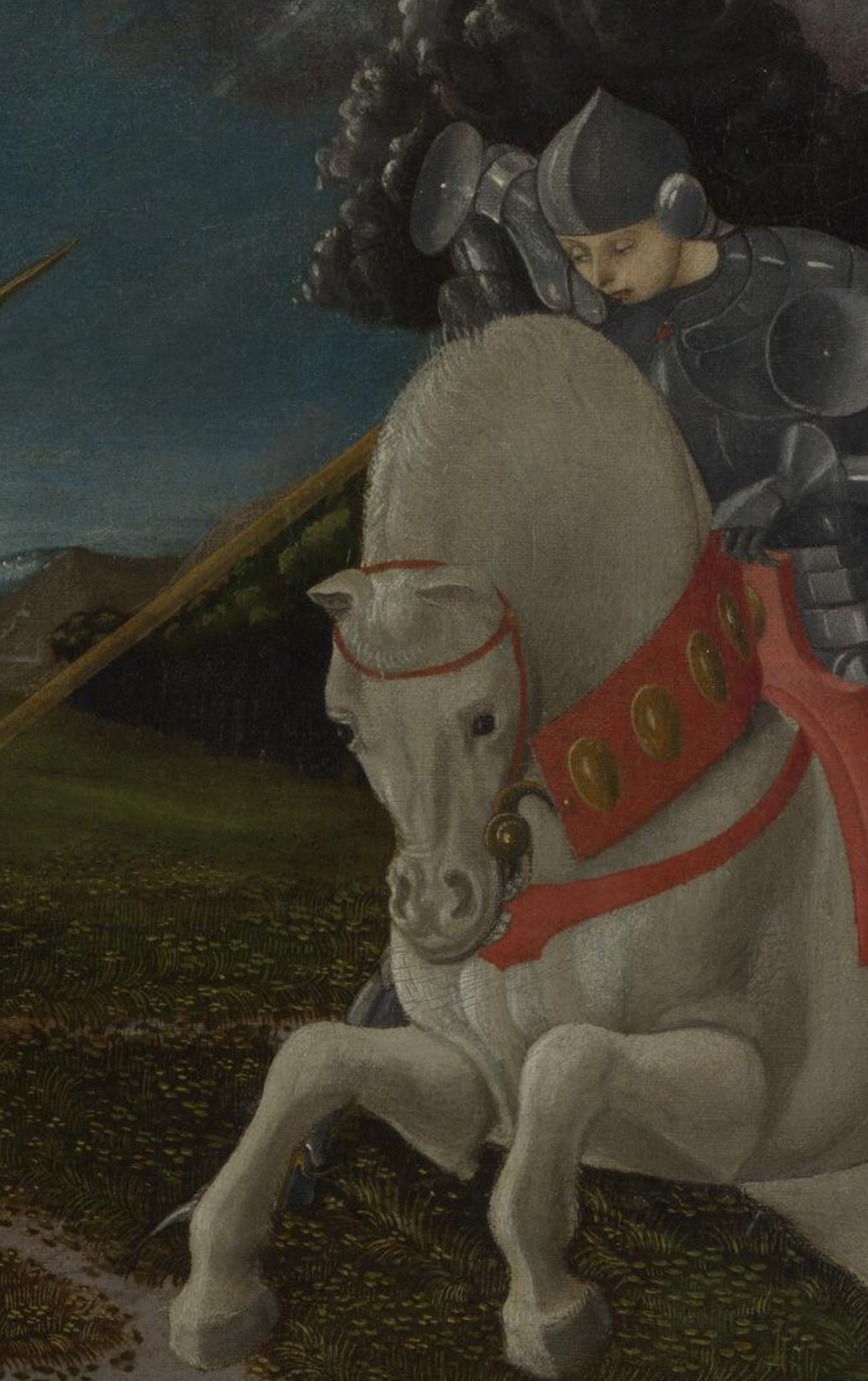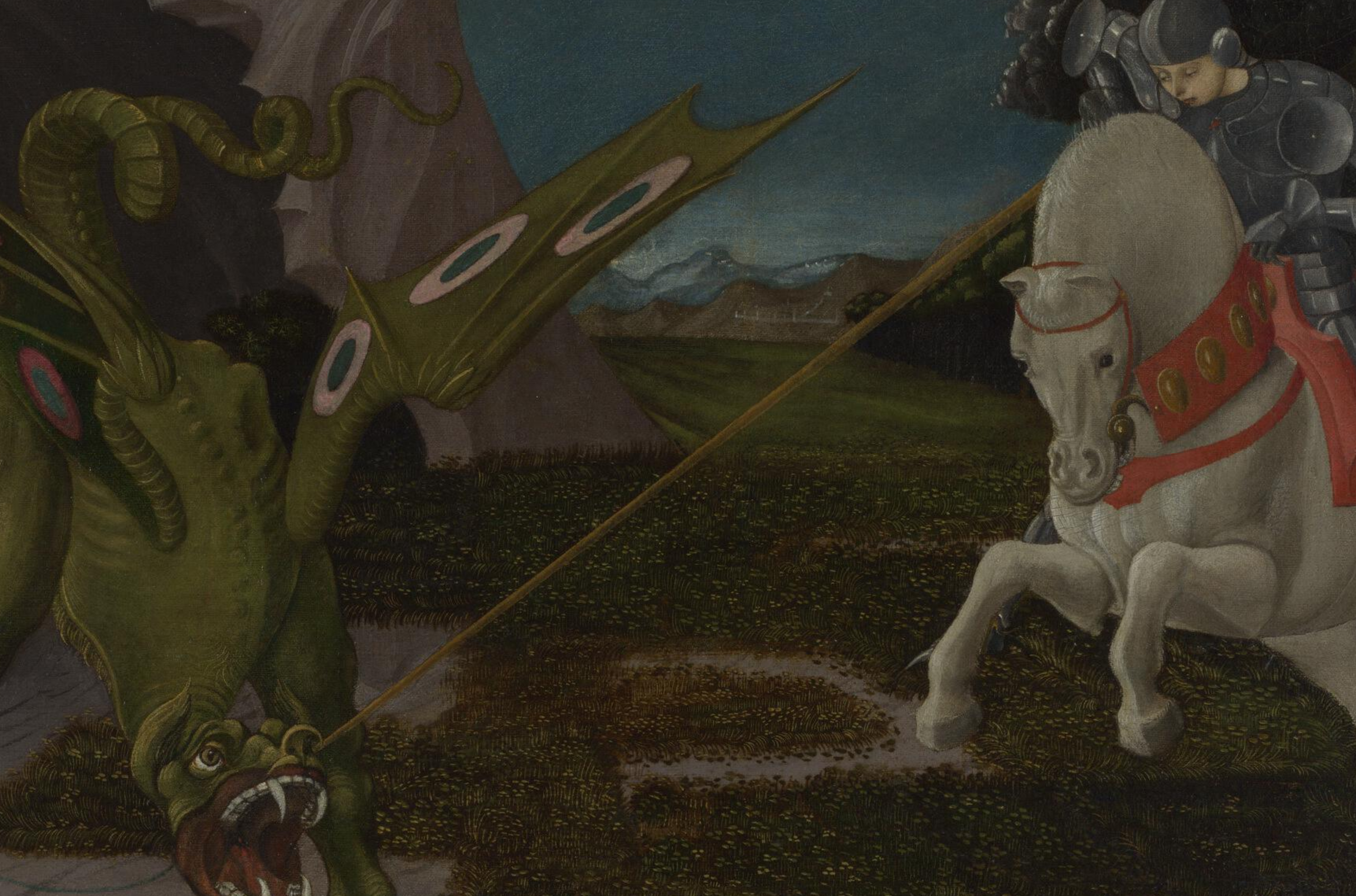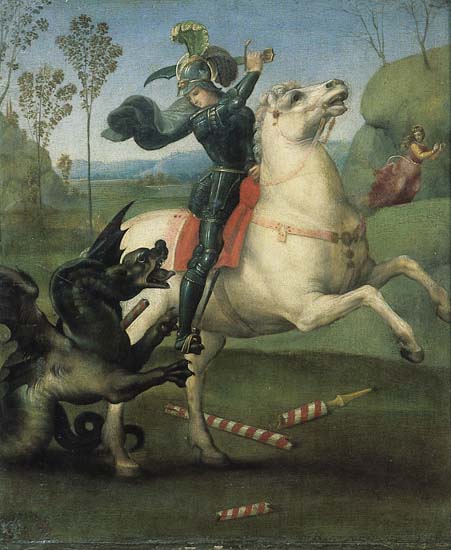
The cut of a gross diagonal – the lanced knight casts his weapon in his hope to kill the dragon. But suspicions abound. The lance is so long, and where exactly does it begin or end?The cut of a diagonal – the lanced knight casts his weapon in his hopes to kill the dragon. But suspicions abound. The lance is so long, and where exactly does it begin or end?

It sits in the knight’s grasp somewhere behind his steed’s curved neck.

On its pointed end, the lance is lodged tenderly at the nostril of the beast, not quite inside, indistinctly connected to its head. In this context, the lance is less a weapon of combat than a tether between the two masses, a bridge connecting the mounted knight and the crouching dragon. It demands to be crossed by our eye.

This bridge occupies and cuts across the center of the picture. We cannot stop and rest in this center, only follow its path. Like motorists, we are given to only the most passing pleasure in the scenery. The lance is a highway cut through the landscape. And like a highway, it is a triumph of technology (here, the technology of form) over nature.
Uccello nearly fails in illustrating his subject by his insistence on this line, this bridge, this tether, this lance. The battle is frozen like a diagram, without the physical drama that mortal combat entails.
A common solution would have had the lance pulled back in the grasp of the knight, allowing us, the viewer, to anticipate his killing blow.

In one of Raphael’s depictions, he did just that. This negotiation with the picture’s futurity allows us as viewers to feel the blow with whatever startling speed our imagination can muster (for Raphael’s second attempt at the St. George theme, he cast the lance instead of the scimitar).
Instead, Uccello paints the lance after the thrust, at the precise instant it connects. In the time of the depiction, the painting takes place after the force of the strike but before its impact.

This choice totally undermines the narrative flow of the action. We can not even say what the next instant holds. What we are given is so granular a vision of time, that it is unlike anything we could possibly witness with our eyes in “real time.” As such, in accordance with all good sense of image making, Uccello’s St. George and the Dragon fails.
Instead, what we are given is a glorious, impossible machine- machine being the word most appropriate for such an atemporal and uniquely functional working of parts.